Converting Clients. A lot of small and medium businesses think that consultancy is the one-and-only way to convert clients. Let me rephrase that: a lot of small and medium businesses think that trying to sell their services to prospective clients is the best way to win clients. Selling is not the only way to win clients. Attracting clients could be easier than you think if you are doing it right. However, to do it right, you need to send the right message. In this blog, we’re going to discuss how to do just that:
What is the main issue with consultation follow-up:
It happens to the best of us- you finish up a call with a great prospect, and then life gets in the way and you forget to follow up. But by not following up, you could lose all the progress you made on that call, and potentially even the customer. To keep the momentum going, set a reminder for yourself immediately after the meeting ends to follow up with your new contact.
So how do you overcome this:
Post-consultation automation can help you take care of some of the most tedious tasks related to working with prospects. For example, you can set up automatic thank-you emails after meetings or introduce an offer, and follow up on it. Automation can save you a lot of time in the long run, so you can focus on more important things.
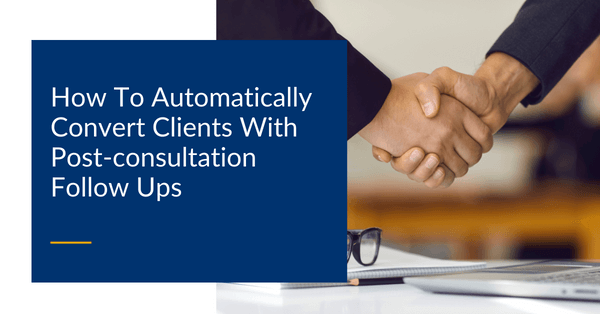
Here are a few things to take into account in order to implement your post-consultation follow up:
1. Use a schedule for following up:
Many businesses don’t take the time to set up clear expectations for follow-up communication. As a result, they often miss out on opportunities.
To avoid this, develop a follow-up schedule that outlines when email and call follow-ups should happen, down to the minute. This will help ensure you don’t miss any important opportunities and that you convert clients.
The main objective of a schedule is to ensure a timely and consistent follow-up with leads, regardless of whether they are ready to make a purchase immediately or require a follow-up in the future.
To begin, it’s recommended to establish two basic contact schedules – one for active leads and another for passive leads. Active leads are those who are more responsive and have demonstrated a stronger interest in making a purchase soon.
Passive leads, while still considered promising, may require a longer time frame before they’re ready to commit to a purchase.

2. Following up:
Having a sense of timing is important in all areas of life, and this definitely includes business. If you follow up with someone at the wrong time, you might lose them as a lead. It’s been proven that there are certain times that are better than others to reach out. For example, the average person opens their emails more on Tuesdays during work weeks. However, this will of course vary depending on the person.
Timing is key when it comes to following up in order to convert clients. You need to know not just the day, but the hour that your contacts are most likely to be interacting with your messages. Once you have that information, you can work it to your advantage.
3. How many follow-ups should you send?
Although there is no clear-cut answer to this question, according to research conducted by Woodpecker, it is suggested that the ideal amount of emails to send is between two to three.
In addition, a study by Backlinko discovered that by sending just a single extra follow-up email, the response rate could increase by around 66%, and contacting the same recipient multiple times may result in twice as many responses.
All things considered, in order to convert clients, you can think that following up with three to five emails is good. But it’s important to understand that sending too many follow-ups to your prospects could be more harmful than you think. It’s easy to go from a following up email to a spam-labeled email.
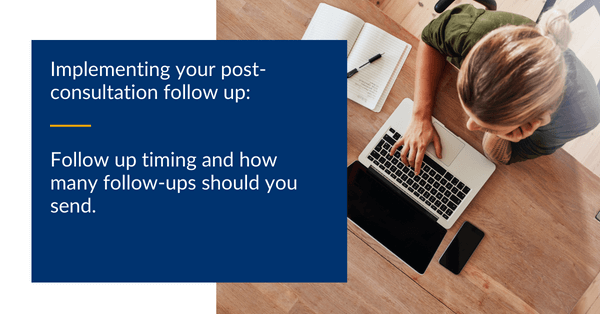
4. Send following-up emails to first conversations.
A follow-up email can often be the key for your business to convert clients. It’s important to avoid going silent on a potential customer, particularly if they’re new to your company.
By sending a follow-up email, you can demonstrate that you value their interest in your company. A simple thank you email can go a long way in showing your appreciation for their time.
There are various ways to express gratitude after a meeting, such as directly thanking them or highlighting the positive aspects of the conversation. Regardless of the method, it’s important to ensure that the recipient is genuinely convinced of your appreciation.
Focusing on the positive aspects of the meeting can also be effective in endearing the client to your brand. By highlighting the enjoyable aspects of the conversation, you can create a positive impression that may help drive the client toward conversion.
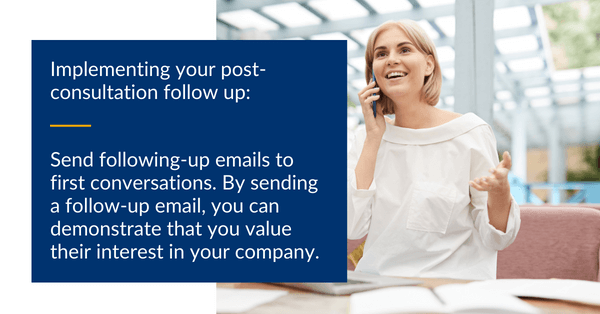
5. Follow up with stuck leads and convert them to clients
While having leads is positive, it’s even more advantageous when those leads convert into sales, as this is the primary way for a business to generate profit.
To achieve this, it’s essential to follow up with leads that are stuck in your sales pipeline.
To convert clients, it’s important to engage with them over an extended period of time. However, it’s crucial not to come across as pushy or spammy in your follow-up efforts. Instead, seek permission from the client before reaching out and space out your messages and calls appropriately.
To avoid being seen as a nuisance, ensure that your follow-ups are neither too far apart nor too frequent. This will help maintain a positive relationship with the lead and increase the chances of converting them to clients.
6. Deliver resources and content of value
If your service or product is complex, you can provide additional information and explain the benefits to your prospects in the coming follow-up email. If you’re unsure whether what you had to offer was clear, try presenting it in a different way in order to rekindle their curiosity.
Follow-ups offer an excellent opportunity to recapture your prospects’ attention and give them more information about your offer. You also can include links to your blogs or direct them to your website’s Q&A.
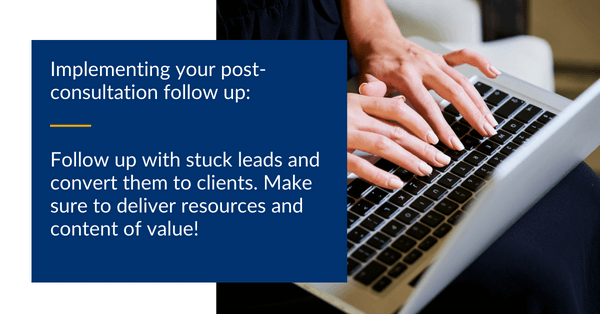
What if a client doesn’t respond to your following up?
Follow-up emails can be overwhelming and it’s important to avoid overdoing it. It’s recommended to limit the follow-up emails to 3 or 5 and then shift your focus to more responsive recipients. The last email should be a breakup email, which can surprisingly trigger replies and can also lead to conversions. A breakup email with a compelling one-liner such as “What made you change your mind?” can show your genuine interest in helping the person receiving the email about what your offer is. This simple question can make them reconsider your offer and the reasons behind their decision. Ask the reasons that led to their decision and use the feedback in order to make necessary improvements.
It’s important to remember to track your follow-up email metrics in order to identify what’s effective and improve your approach. Keep an eye on various important metrics for your follow-up email sequences such as opening rate, unsubscribing rate, spam rate, converting rate, and more. These analytics metrics are typically provided by most email automation tools.
Conclusion
We hope you enjoyed our article about how to automatically convert clients with post-consultation follow-ups. With this knowledge, we know that you can take your consulting business to the next level by implementing automated systems that make it easy for you to focus on what matters most—your clients.
Thank you for reading, and I hope you found this post useful!
Before you go, I want to offer you something. It is a done-for-you service where we help you maximize your marketing and sales effectiveness. This is achieved by streamlining manual, and time-consuming tasks in the sales process.
We guide you through the process and help you set up the right tools for your company and price point so you can stay focused on things that really matter. Building your business and making huge sales.
You can read more about it here.
We hope you enjoyed our recent outreach blog and as always should you have any questions feel free to contact me anytime. I’d be happy to discuss this topic further with you.


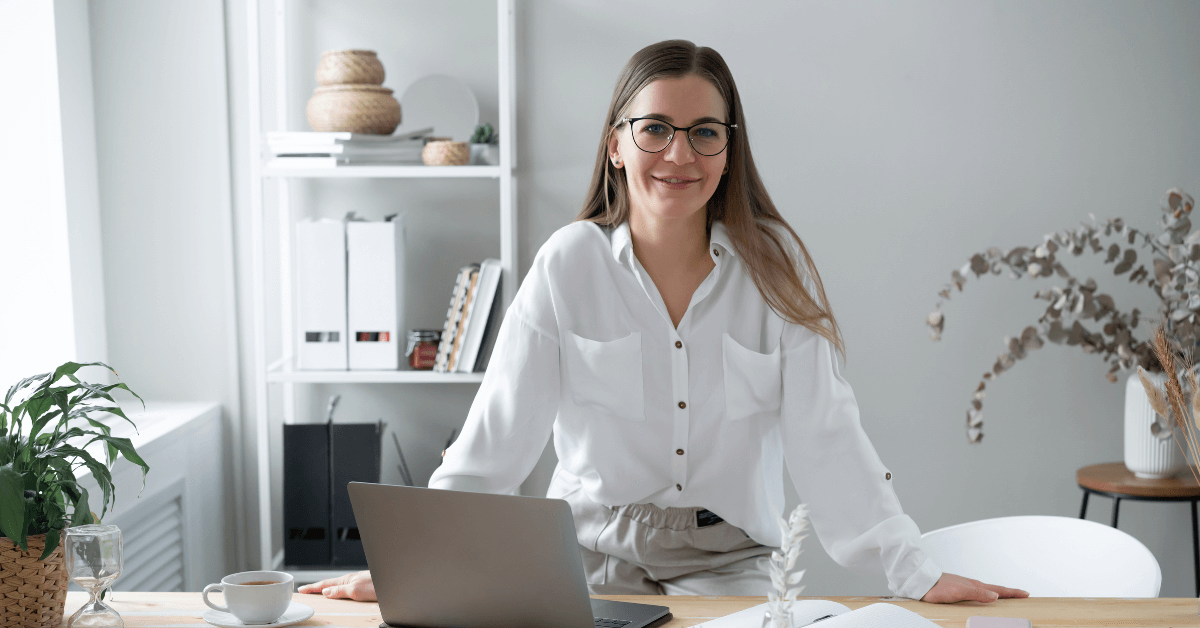



0 Comments